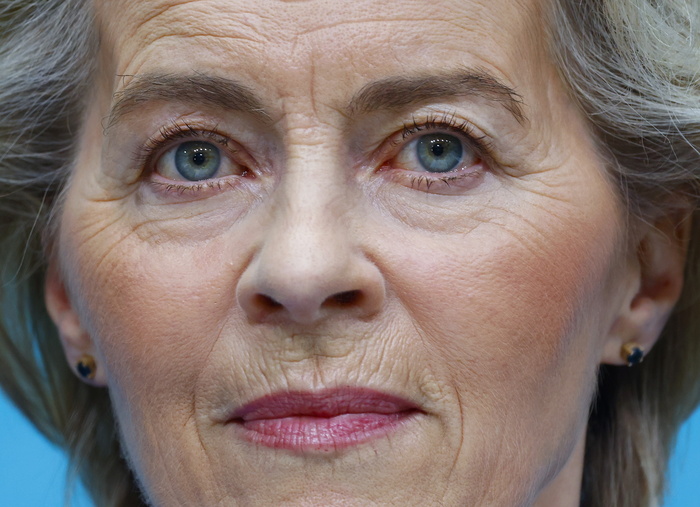Bosnia and Herzegovina: History, Politics, Population, and Geography
Created: 12/17/2021 Updated: 12/17/2021, 1:02 PM
Sarajevo, the capital of Bosnia and Herzegovina © Jan Wlodarczyk / IMAGO
Today's Bosnia and Herzegovina was formed after the dissolution of Yugoslavia and the Bosnian Wars.
The population includes Bosniaks, Croats and Serbs, which has led to internal political tensions to this day and is reflected in the administrative structure of the country.
Recent history, population demographics, and the country's challenging geography play important roles in the low economic growth.
Sarajevo - Almost 30 years after the end of the war, the aftermath of the conflict of nations can still be felt domestically today.
The complex political structure of Bosnia and Herzegovina has an impact on the government's ability to act and weakens the economy.
Bosnia and Herzegovina: Complicated State Structure
Bosnia and Herzegovina has one of the most complex state structures in the world.
The reason for this is the attempt to create a structure that unites the tribes after the end of the Yugoslavia conflict.
Since there is still a lack of trust today, the state system is shaped by many levels and positions.
Bosnia and Herzegovina consists of two entities and a condominium:
Entity "Federation of Bosnia and Herzegovina": 62.55 percent of the population
Entity "Republika Srpska": 35 percent of the population
Condominium "District Brcko": 2.45 percent of the population
Each entity has its own executive and legislative branches.
The Federation of Bosnia and Herzegovina also has ten cantons - smaller administrative units with their own responsibilities.
Overall, Bosnia and Herzegovina covers an area of over 51,000 square kilometers and has around 3.3 million inhabitants.
The country has three neighbors:
Croatia in the north and west
Serbia in the east
Montenegro in the south
The state is completely surrounded by the former republics of Yugoslavia.
In the south-west, Bosnia and Herzegovina has access to the Adriatic Sea over an approximately 20 km long coastal strip.
The state of Bosnia and Herzegovina: geography, vegetation and wildlife
Large parts of the country are covered by low mountain ranges.
They reach a height of almost 2,400 meters.
The highest mountain is Maglić on the border with Montenegro at 2,386 meters.
In the north-west and south-east there are flatter zones that allow agricultural use.
The climate in the country must be classified between continental and Mediterranean.
The winters are often very cold with temperatures as low as -20 ° C.
In summer there is often drought due to the heat and lack of rain.
Vegetation and wildlife in Bosnia and Herzegovina
More than half of Bosnia and Herzegovina is forested.
Large parts of it are difficult to access and have therefore been left to their own devices to this day.
The rich flora and fauna benefit from this.
With their calcareous soils, some parts of the country offer excellent conditions for certain orchid species.
A surprising number of plant species are endemic and heavily protected in Bosnia and Herzegovina.
Many animal species indigenous to Europe find a safe home in Bosnia and Herzegovina.
This includes:
Brown bears
Golden eagle
Lanner and kestrel
Snakes like the adder
Eels
Bosnia and Herzegovina: An eventful history in the Balkans
Today's Bosnia and Herzegovina was colonized by humans very early on.
Archaeological finds document a high culture in the period from 5500 to 4500 BC.
A settlement of the Butmir culture was excavated near the municipality of Visoko.
According to the finds, it existed around 5000 BC.
For about 500 years.
During the Bronze Age, Illyrians settled in the Balkans.
They ran cattle, some agriculture and mining.
They were trading in silver.
The region later became part of the Roman and, in the 15th century, of the Ottoman Empire.
The Ottomans brought Islam to Bosnia.
At that time, the two historical regions that give the state its name today already existed: Bosnia and Herzegovina.
After the victory of the Russians against the Ottomans in 1878, the region was subordinated to the Habsburg monarchy.
The growing desire for independence led to the assassination attempt on the heir to the throne Franz-Ferdinand in Sarajevo and, as a result, to the First World War.
After the end of the war, today's Bosnia and Herzegovina became part of the Kingdom of Yugoslavia.
The Second World War, resistance in the country and communist popular movements led to the establishment of the Federal Republic of Yugoslavia in 1945.
Bosnia and Herzegovina was a socialist republic until the dissolution of Yugoslavia in 1990.
Bosnia and Herzegovina: The Bosnia Conflict
After the end of the communist government in Yugoslavia, it was not easy for the former republics to rearrange themselves.
Slovenia and Croatia declared their independence in 1991.
Bosnia and Herzegovina followed only a year later, in 1992. However, only the Bosnians and the Croatians spoke out in favor of independence.
The Serbs boycotted the referendum and then founded their own Serbian Republic of Bosnia and Herzegovina - the predecessor of today's Republika Srpska.
The civil war broke out, claiming around 100,000 lives and only ending with the intervention of world politics.
In the Dayton Treaty signed in the USA, all warring parties agreed on a new Bosnia and Herzegovina with a very complex state structure.
Bosnia and Herzegovina: Politics of the State in Modern Times
In 2006 the first free elections took place in the new Bosnia and Herzegovina.
However, there was no political agreement in the country.
The world powers EU, USA and Russia, which are still represented in the country, jointly decided to appoint a high representative for an indefinite period of time.
In all elections that have taken place since then, there have been discussions about possible electoral fraud and, in some cases, discussions that have lasted for years leading up to the formation of a government.
Bosnia and Herzegovina is ruled today by a triumvirate in which all three ethnic groups of the country are represented.
The following presidents have been in office since the last election in 2018:
Šefik Džaferović for the Bosniaks
Željko Komšić for the Croatians
Milorad Dodik for the Serbs
They take turns in the chair on a regular basis.
Head of government as chairman of the Council of Ministers is Zoran Tegeltija.
State of Bosnia and Herzegovina: population demographics
All citizens of Bosnia and Herzegovina are officially referred to as Bosnians without any connection to their ethnic background.
The Bosnians include:
Bosniaks
Croatians
Serbs
The term Bosniaks refers solely to Muslims of Bosnian descent.
They make up about half of the country's population.
Almost a third are Orthodox Serbs and with around 15 percent the mostly Catholic Croats represent the smallest proportion of the population of the three main groups. Furthermore, 17 other recognized minorities such as the Roma or the Jews live in Bosnia and Herzegovina.
There are hardly any differences in the spoken language, which is why the national language is often referred to as Serbo-Croatian.
However, the locals see it differently and use their own terms for their language such as Bosnian, Croatian and Serbian.
In writing, the delimitation of the languages becomes clearer.
While the Cyrillic alphabet is mostly used in Serbian, Latin is used in Croatian.
Bosnia and Herzegovina: State economy under strain
Even at the time of the Socialist Republic of Yugoslavia, Bosnia and Herzegovina had a comparatively weak economy. The focus was and is on the export of wood and mineral resources. There is little industrial production, especially not for exportable goods. The government regularly solicits foreign investors; However, bureaucratic obstacles and corruption slow them down.
In recent years the unemployment rate has been almost 30 percent.
The situation is particularly dramatic with young people: youth unemployment is almost 70 percent, which is leading to a strong emigration of the young population.
Undeclared work still accounts for a proportion that should not be underestimated and does not flow into the gross domestic product.
In real terms, this was around 14 billion euros in 2015.
This corresponds to a per capita income of around 3,700 euros per year.
The euro is a widely used currency in Bosnia and Herzegovina, although the official national currency is the convertible mark.
Their value is tied to the euro in a fixed ratio.














